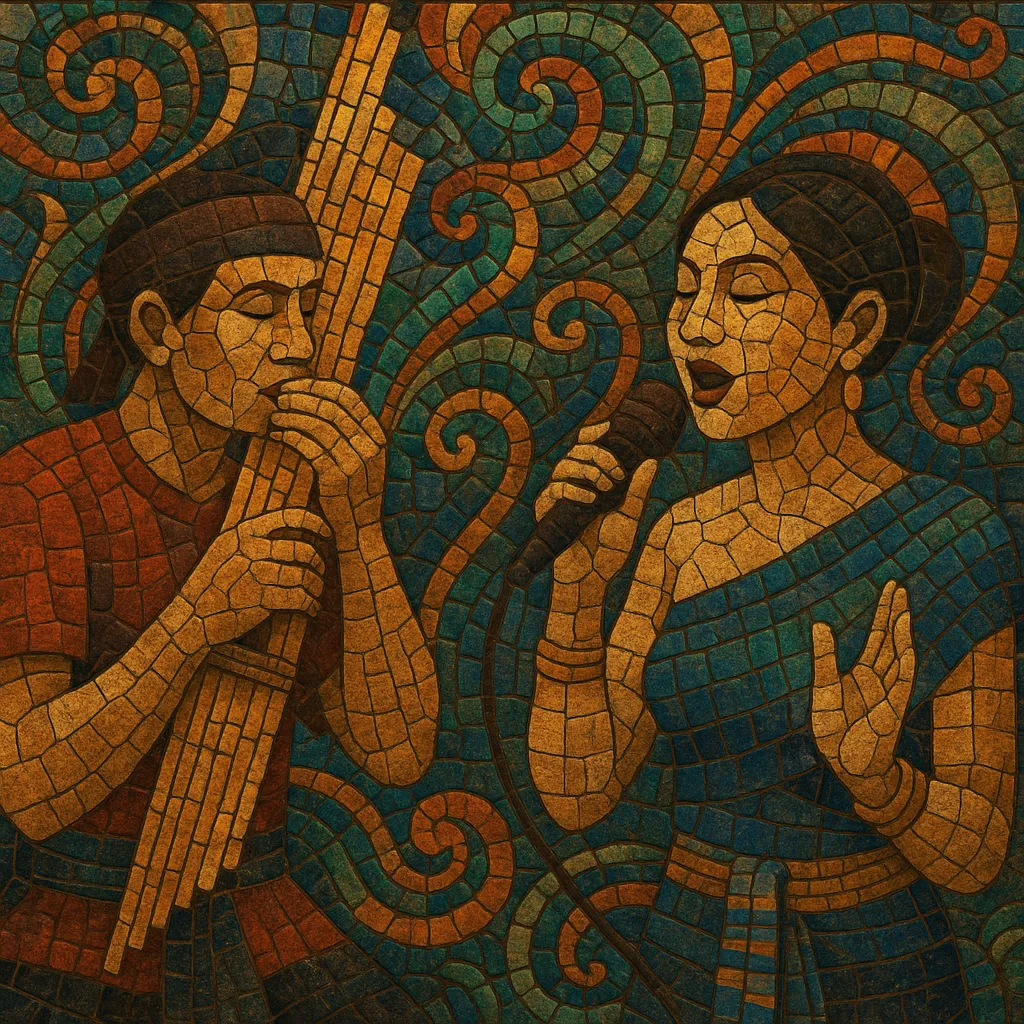Mor lam is a Lao and Isan (northeast Thailand) tradition of improvised sung poetry accompanied most characteristically by the khaen, a free‑reed mouth organ. Performers, known as mo lam, deliver long, melismatic lines that weave around a steady drone and interlocking rhythmic ostinatos.
The genre is fundamentally narrative and dialogic: verses often unfold as call‑and‑response between singer and instrument or chorus, using poetic meters and witty, extemporized wordplay. Musically it favors pentatonic or anhemitonic scales, heterophonic textures, and flexible tempo that can accelerate for dance sections. In modern contexts, mor lam frequently integrates electric guitar, bass, keyboards, and drum kit, yielding high‑energy concert forms and the faster offshoot mor lam sing.
Mor lam developed among Lao-speaking communities of the historic Lan Xang cultural sphere. By the 1700s, itinerant poet-singers (mo lam) were performing ritual, courtship, and storytelling verse accompanied by the khaen. Core substyles emerged—such as lam phuen (narrative epics) and lam glawn (lyric poetry)—that codified meters, rhyme, and melodic contours.
The tradition spread widely through festivals, temple fairs, and village events across present-day Laos and the Isan region of Thailand. Performances remained largely acoustic and community-based, with the khaen providing a modal drone and rhythmic motor for extended poetic exchange.
Radio, cassettes, and urban migration brought mor lam into new venues and audiences. Interaction with Thai popular styles—especially luk thung—introduced microphone technique, stage choreography, and amplified ensembles. Producers and bandleaders experimented with drum kits, electric guitar, and bass while retaining the khaen as a sonic emblem.
A faster, dance-driven variant, mor lam sing, crystallized with uptempo grooves, catchy refrains, and virtuoso khaen riffs. The style propelled mor lam onto large concert stages and television, creating star systems and professional troupes that toured domestically and abroad.
Contemporary mor lam thrives in both traditional and hybrid forms. Artists collaborate with pop, rock, and hip hop producers; the khaen’s timbre and pentatonic motifs appear in T-pop and Thai hip hop tracks. At the same time, community-based performances, ritual contexts, and heritage programs preserve slower, narrative subgenres and the poetic craft of improvisation.


